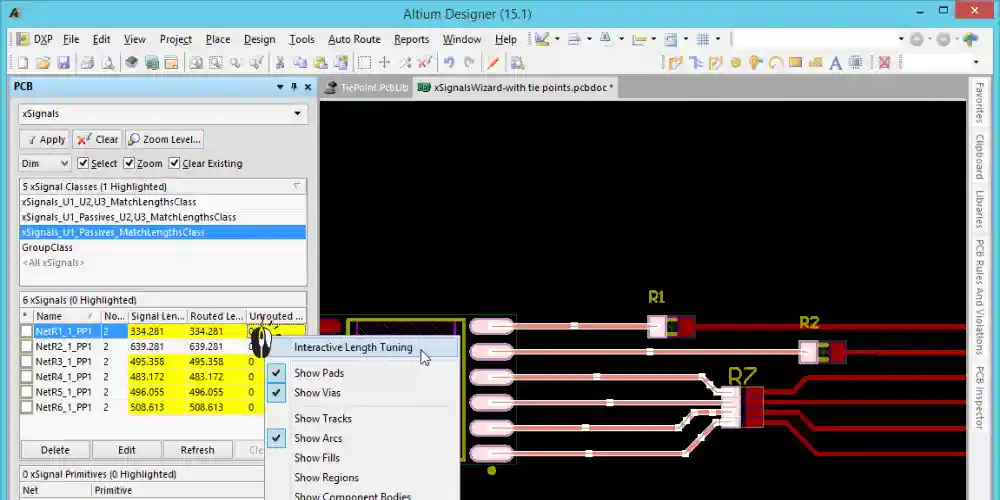
7 Key Features of xSignal That Make It Stand Out
- Technology
- December 2, 2023
- No Comment
- 1518
xSignal is an innovative technology platform that is changing the way we interact online. It is committed to user empowerment and data privacy, fostering a trustless digital landscape.
An xSignal is a designer-defined signal path that can wend its way through multiple IC pins and resistors. It can also be used to simplify length matching.
1. User-centric philosophy
The user experience (UX) is crucial to the success of any digital product. The best teams have a clear vision and focus on the end users throughout their entire development process.
User empowerment is the driving force behind xSignal’s innovative approach to internet governance. Through the use of cutting-edge technologies and a commitment to user transparency, xSignal is reshaping the digital landscape by ensuring data privacy and security while also rewarding users through its groundbreaking compensation plan.
The simplest way to create an xSignal in Altium Designer is to use the Design >> xSignals sub-menu from the main menu or right-click in the PCB layout and run the xSignals Multi-Chip Wizard. The dialog will open, asking you to select a source component and its associated nets.
2. Seamless sign-up process
A seamless registration process is essential to your digital industry event’s success. This is because a smooth sign-up process will ensure that applicants have a positive experience, and will not be frustrated or discouraged by any obstacles.
To create a xSignal from a series termination component, select the chosen source component and the required start pad and end pad in the design space or use the PCB panel in Nets mode to locate pads and run the xSignals >> Create xSignals Between Selected Components command. The resulting xSignal will take the name StartNet>_EndNet>_PPn, where n is a unique integer used to distinguish multiple xSignals defined for the same net combination.
3. Decentralized internet ecosystem
With data breaches and privacy concerns at an all-time high, What is xsignal provides a robust shield against potential threats by encrypting user information. It also prioritizes decentralization, distributing control and promoting transparency.
A decentralized internet ecosystem is a model of distributed systems that promotes the ownership of data by individuals, instead of being controlled by sizable corporations. By leveraging blockchain technology and cryptographic innovations, xSignal operates within this ecosystem, challenging conventional centralized paradigms and nurturing a digital environment that prioritizes users’ data autonomy.
To support tech companies in their Web 3.0 transition journey, xSignal offers strategic upgrade pathways and a developer-friendly environment. This enables tech teams to adopt decentralized technologies and integrate them into existing frameworks seamlessly.
4. Innovative design tools
The Create xSignals Between Components Wizard allows you to define classes and rules for xSignal routes that connect a chosen source component with the selected destination component. The Wizard also performs analysis of all nets that currently connect to the source component, identifying potential xSignals for consideration.
Spectro-X uses the data from signal capture files to find and analyze spectral events in the file, such as carrier, wireless standard, arbitrary waveform, and pulsed signals. The software can then zoom in on sections of the file based on frequency or time.
5. Secure and transparent online environment
In a digital landscape where trust has become a central issue, xSignal offers an unwavering commitment to a secure and transparent online environment. This is a promise that extends beyond the seamless sign up process to every aspect of the company’s framework.
For instance, the company prioritizes data encryption and decentralization to protect user information. In addition, users can easily access detailed privacy policies and regular transparency reports.
This helps users understand how their information is used, ensuring that only authorized parties can access the content of a message. This also helps to prevent law enforcement agencies and mobile carriers from reading private messages sent through Signal.
6. Customization of privacy settings
Signal is a text-messaging app that works just like your typical one. It has an easy-to-use interface, is free to download and use, and — most importantly, according to privacy icons like Edward Snowden, Elon Musk and Jack Dorsey — offers robust encryption.
Custom metrics let you track anything in your application – from new users to database disk usage. You can also “tag” a metric to label it in a graph on mouse hover. We support gauges, counters and measurements based on the OpenTelemetry metric helpers.
You can choose an existing xSignal class or enter the name of a new one. We will create this xSignal and associate it with the selected class.
7. Flexible compensation plan
The flexible compensation plan allows employees to personalize their benefits package based on their needs and circumstances. It helps ensure that the employer can provide a competitive compensation package while also being consistent with its commitment to diversity, equity, and inclusion (DEI).
To create an xSignal, select the start pad and the end pad (these pads must be in different nets if they are connected to a series termination component). Then run the xSignals >> Create xSignals from Selected Pads command from the main menus or right-click on the PCB layout in the panel and select xSignals mode.
